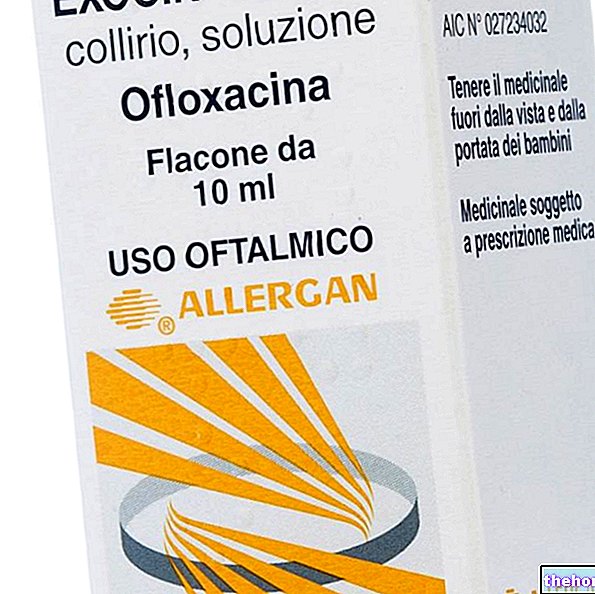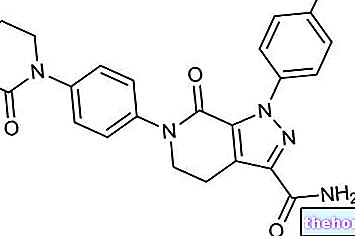DALACIN ® is a drug based on Clindamycin hydrochloride
THERAPEUTIC GROUP: Antimicrobioci- Antibiotics for systemic use

Indications DALACIN ® Clindamycin
DALACIN ® is used in the clinical setting to cope with infections generally sustained by anaerobic microorganisms sensitive to Clindamycin and for example resistant to penicillins.
Lincosamides represent a second choice drug due to the high toxic potential.
Mechanism of action DALACIN ® Clindamycin
DALACIN ® is a drug based on Clindamycin, an active principle obtained from Lincomycin, with which it shares the same mechanism of action but not the pharmacokinetic characteristics, which are decidedly better.
Compared to its progenitor, in fact, Clindamycin taken orally has a greater bioavailability, equal to about 90% of the total dose taken, and a reduced time to peak, reaching maximum plasma concentrations in just 40-60 minutes.
By distributing homogeneously in the various tissues, with the exception of the nervous one, given the inability to cross the blood-brain barrier with intact meninges, Clindamycin carries out its therapeutic activity by binding the 50S ribosomal subunit and inhibiting the peptidltransferase enzyme responsible for the lengthening of the nascent peptide chain.
This biological activity, similar to that of macrolides, gives the drug DALACIN ® a predominantly bacteriostatic action, preventing the proliferation and colonization of the various pathogenic species.
At the end of its activity, Clindamycin is partially metabolized in the liver and significantly eliminated via the biliary route.
Studies carried out and clinical efficacy
1. THE "EFFECTIVENESS OF CLINDAMYCIN IN THE TREATMENT OF CEREBRAL TOXOPLASMOSIS
Oman Med J. 2012 Sep; 27: 411-2.
Successful treatment of cerebral toxoplasmosis with clindamycin: a case report.
Madi D, Achappa B, Rao S, Ramapuram JT, Mahalingam S.
Very interesting case report that demonstrates how the treatment with Clindamycin was effective in promptly guaranteeing a regression of the clinical picture present in the course of cerebral toxoplasmosis.
2. THE DIFFUSION OF MULTI-RESISTANT MICROBIAL STRAINS
Diagn Microbiol Infect Dis. 2012 Sep; 74: 16-21.
Clindamycin-resistant methicillin-resistant Staphylococcus aureus: epidemiologic and molecular characteristics and associated clinical factors.
Cadena J, Sreeramoju P, Nair S, Henao-Martinez A, Jorgensen J, Patterson JE.
Epidemiological work that demonstrates the increase in the diffusion of multidrug-resistant staphylococci strains, therefore also insensitive to clindamycin. This diffusion could significantly compromise the therapeutic capacity of response, aggravating the prognosis.
3.CLINDAMYCIN AND MALARIA
Malar J. 2012 Jan 4; 11: 2. doi: 10.1186 / 1475-2875-11-2.
Clindamycin plus quinine for treating uncomplicated falciparum malaria: a systematic review and meta-analysis.
Obonyo CO, Juma EA.
Very interesting clinical trial that demonstrates the poor efficacy of Clindamycin used together with quinine, in the treatment of even the most complicated forms of malaria. However, experts in the sector still seem to be debating the real potential of this combined treatment.
Method of use and dosage
DALACIN ®
Hard capsules of 150 - 300 mg of Clindamycin.
The therapeutic scheme envisaged for Clindamycin varies considerably according to the clinical picture, the physio-pathological conditions of the patient and the possible combination with complementary antibiotic therapies.
In principle, the range between 600 and 1200 mg per day should be divided into 3-4 intakes given the short half-life of the active ingredient.
Different dosage regimens are envisaged in case of cerebral toxoplasmosis, Pneumocystis pneumonia or maintenance therapies of gynecological and pelvic infections.
Warnings DALACIN ® Clindamycin
The systemic use of Clindamycin, as well as that of lincosamides, is in most cases associated with the development of unpleasant adverse reactions, especially of a gastroenterological type, such as cramp-like abdominal pain, nausea and persistent diarrhea, often associated with opportunistic infections from Clostridium Difficile. causative agent of pseudomembranous colitis.
Having noted these effects and considering the pharmacokinetic characteristics of the active ingredient, it would therefore be advisable to undergo a careful medical examination to evaluate the possible presence of conditions incompatible with the administration of Clindamycin, before taking DALACIN ®.
Extreme caution is recommended in the use of this drug in patients suffering from gastrointestinal, hepatic and renal diseases.
DALACIN ® contains lactose among its excipients, therefore its use is contraindicated in patients with lactase enzyme deficiency, glucose-galactose malabsorption syndrome and lactose intolerance.
PREGNANCY AND BREASTFEEDING
Given the absence of clinical trials able to clarify the safety profile of Clindamycin on the exposed fetus and its ability to be excreted in breast milk at relevant concentrations, the use of DALACIN ® during pregnancy and in the subsequent period is not recommended. breastfeeding.
Interactions
Patients treated with DALACIN ® should pay particular attention to the simultaneous intake of other antibiotics such as macrolides, for the enhancement of both the therapeutic effect and the adverse reactions, and erythromycin, for the reduction of the therapeutic efficacy.
Different studies have also shown how clindamycin can enhance the blocking activity of drugs with inhibitory action on the neuromuscular system.
Contraindications DALACIN ® Clindamycin
The use of DALACIN ® is contraindicated in patients with known hypersensitivity to the active substance or to one of its excipients.
Undesirable Effects - Side Effects
Clindamycin is known to represent a second choice active ingredient in the treatment of anaerobic germ infections due to its potential side effects.
Particularly relevant are the effects on the gastrointestinal system subjected to nausea, vomiting, cramp-like abdominal pain, persistent diarrhea and in the most severe cases also from pseudomembranous colitis.
More rarely side effects such as headache, pruritus, allergic dermatological reactions and hypertransaminasemia have been found.
Note
DALACIN ® is a drug subject to mandatory medical prescription. DALACIN ® is also available in solutions for cutaneous use.
The information on DALACIN ® Clindamycin published on this page may be out of date or incomplete. For a correct use of this information, see the Disclaimer and useful information page.




























